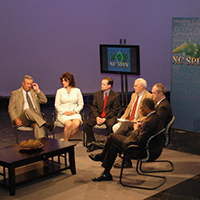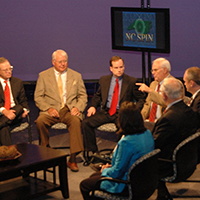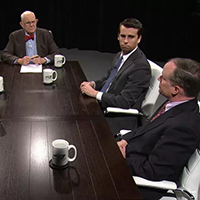Keep tax credits
Published March 17, 2015
Editorial by Greenville Daily Reflector, March 16, 2015.
Generally speaking, state lawmakers do not like to pass up opportunities to increase tax revenue without raising taxes. Such an opportunity is available this budget season, but Greenville has added its name to the long list of cities and towns urging lawmakers to take a different route.
Greenville has benefited greatly from the state’s historic preservation tax credits, which were allowed to expire at the end of 2014. Cities in 90 of the state’s 100 counties have utilized the tax credits to encourage redevelopment projects in historic districts.
Lawmakers allowed the tax credits to expire with the idea that a lower overall tax rate will stimulate jobs and the economy more than offering credits for targeted projects. That philosophy is not sitting well, however, with municipalities, including Greenville, that have seen the credits transform whole city blocks from depressed and vacant areas into preserved historic districts bustling with commerce and entertainment.
Greenville Mayor Allen Thomas pointed out in last Sunday’s Daily Reflector that the majority of the redevelopment and revitalization that has occurred in downtown Greenville would not have happened without the credits.
“Our center city would still be stuck where we were two decades ago,” the mayor said. “Historic structures come with a considerable amount of cost and restrictions. (The tax credits) provide just enough critical value for a bank or financial institution to decide to make the loan to a private investor or not. It is a critical tipping point.”
Thomas could be speaking for just about every city in the state — which is exactly what Gov. Pat McCrory is doing by including revised historic preservation tax credits in his proposed budget.
Redevelopment projects in Pitt County utilizing the credits, listed Sunday by The Daily Reflector, include 17 in Greenville, seven in Farmville and four in rural areas of the county. They total nearly $15 million of investment.
The N.C. Department of Cultural Resources reports more than 2,400 historic tax credit projects statewide since 1998, representing investments of about $1.6 billion.
Greenville’s revitalization, attributed in large part to the tax credits, represents an era of historic preservation that sadly was preceded by the loss of many of the city’s historic buildings. By helping to facilitate the preservation of architectural treasures here and elsewhere across the state, the tax credits also help preserve North Carolina’s cultural heritage.
The governor’s support and a compromise bill in the North Carolina House offer some hope that the historic preservation and economic benefits from the tax credits will continue.
http://www.reflector.com/opinion/editorials/editorial-keep-tax-credits-2817511







